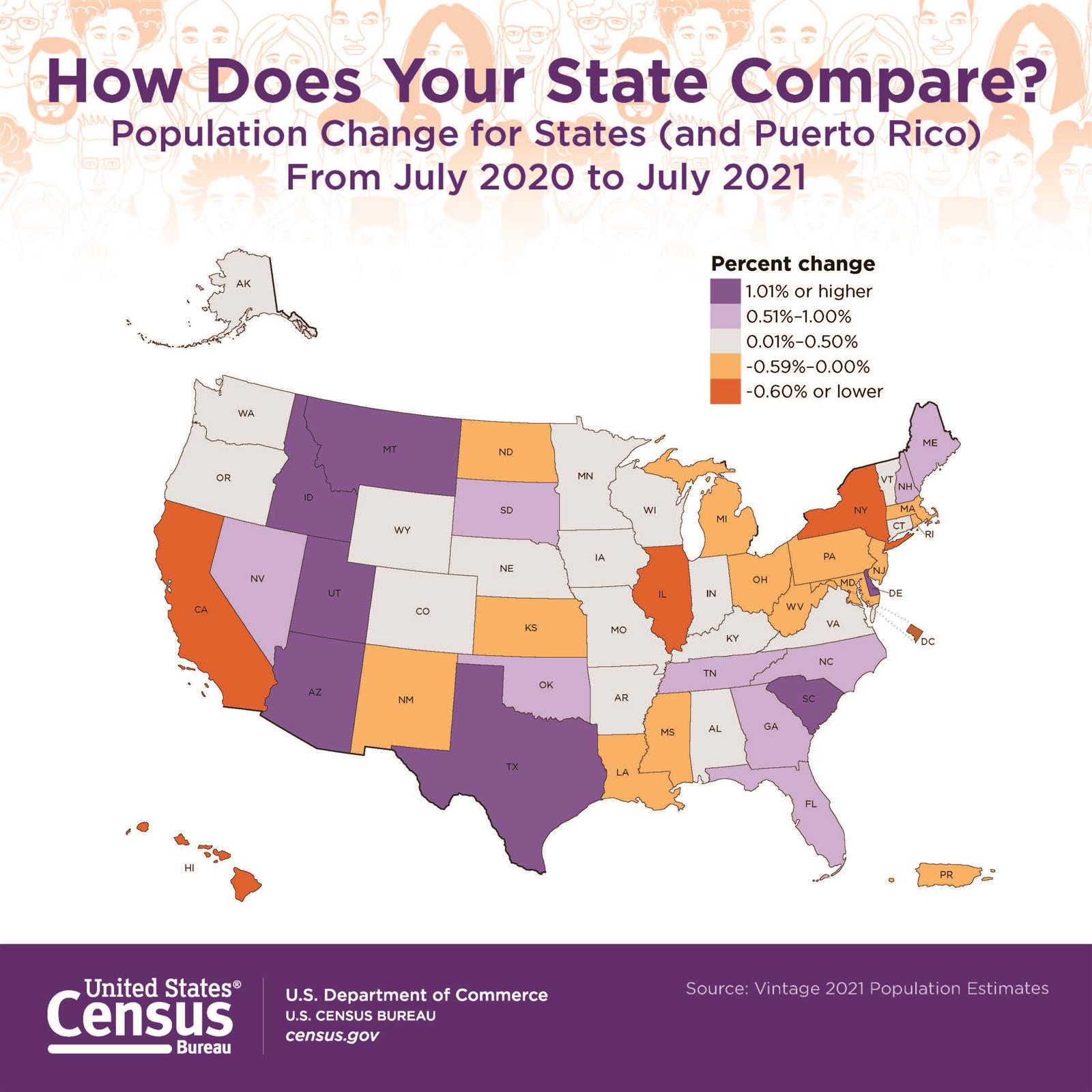Census estimates show Illinois lost more than 113,000 residents in one year

SPRINGFIELD – New estimates from the U.S. Census Bureau suggest Illinois is continuing to lose population.
The latest estimates, released Tuesday, pegged the state’s population at 12,671,469 as of July 1, 2021, down by 113,776, or 0.9 percent, from the official 2020 census.
Several factors contributed to the change, but the single largest was domestic outmigration. According to the data, 122,460 people moved from Illinois to other states during the period from April 1, 2020, to July 1, 2021, while only 5,766 people moved into the state, a net loss of 116,694.
Those losses were offset by a net gain of 5,766 people through international migration as well as a “natural” increase of 2,778 people – the difference between in-state births and deaths during the period.
The Census Bureau routinely estimates national, state and county populations each year following a decennial census using a variety of data sources. But those estimates have been off in the past.
In 2019, for example, the Census Bureau estimated that Illinois had lost more than 51,000 people since the 2010 census while the official 2020 census showed the state had lost about only 18,000.
Still, the latest estimates for Illinois reflect broader national trends of decreased international migration, lower birth rates and increased mortality, due in part to the COVID-19 pandemic.
Overall, the Census Bureau said, the U.S. population grew by 444,464, since the 2020 census, or 0.13 percent, the lowest growth rate since the nation’s founding.
“Population growth has been slowing for years because of lower birth rates and decreasing net international migration, all while mortality rates are rising due to the aging of the nation’s population,” Census Bureau demographer Kristie Wilder said in a news release. “Now, with the impact of the COVID-19 pandemic, this combination has resulted in a historically slow pace of growth.”
The estimates showed that both the Midwest and Northeast regions saw net population declines over the year while the South and West regions both gained population.
Over the past year, the Census Bureau said, the nation’s population growth was due to a natural increase of 148,043, and net international migration of 244,622, marking the first time that net international migration exceeded natural growth.
Between 2020 and 2021, 33 states saw population increases and 17 states and the District of Columbia lost population. 11 of which had losses of more than 10,000 people. This is a historically large number of states to lose population in a year.
On a percentage basis, Illinois had the third largest population decline, behind the District of Columbia, at 2.9 percent, and New York, at 1.6 percent. Idaho, Utah and Montana had the largest percentage increases.
On a numeric basis, Illinois also had the third largest population decline, behind New York and California. Texas, Florida and Arizona had the largest numeric population increases.
Miss Clipping Out Stories to Save for Later?
Click the Purchase Story button below to order a print of this story. We will print it for you on matte photo paper to keep forever.

